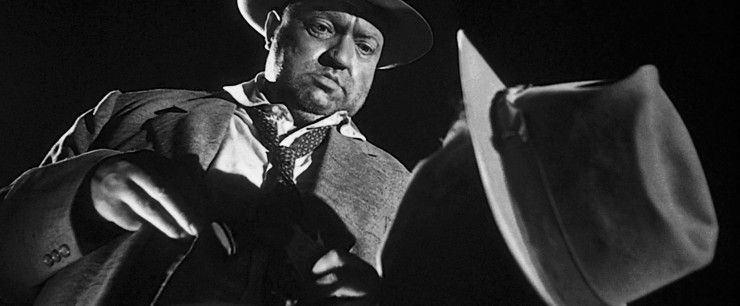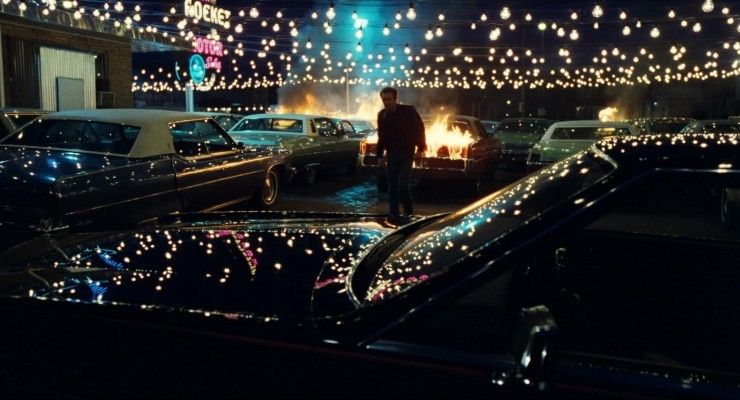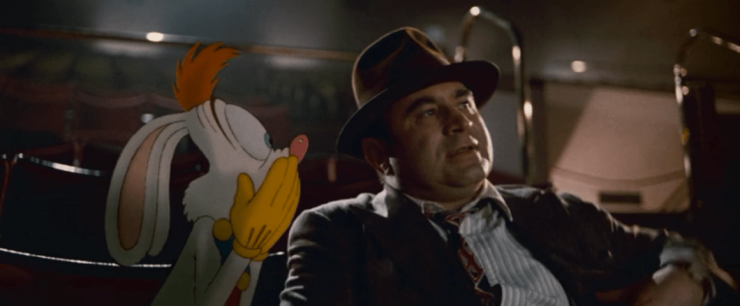What is the Neon Noir Genre?
Meet the more stylized and more cynical cousin to film noir—neon noir.

Influenced by German Expressionism, film noir has been used to show a cynical outlook on life since the 1930s. These “black films” are styled by chiaroscuro lighting, expressionistic sets, and a “hard-boiled” detective whose morality is ambiguous. Films like Touch of Evil, Double Indemnity, and The Asphalt Jungle are characterized by the rejection of sentimental humans while boasting the dynamism of violent death and connects the audience to the absurd reality of the film.
 Orson Welles as Police Captain Hank Quinlan in 'Touch of Evil'
Orson Welles as Police Captain Hank Quinlan in 'Touch of Evil'
In 1959, film noir got an update. As Technicolor made its way into films, neo-noir began to play with the color pallet and moved further away from the shadows. “New dark films” were influenced by the Art Deco movement and focused on themes of alienations, revenge, paranoia, highlighting the anxieties of the film’s time which resonated with audiences after WWII. Chinatown, Zodiac, and LA Confidential portrayed scenes of violent crime and sex that its predecessor was restricted from showing. Neo-noir is an unstructured genre of crime film that reaches from comedies like The Big Lebowski to cynical westerns like No Country for Old Men.
By blending existential trauma and highly stylized visualizations to a dreamlike quality of the film, neon-noir is born. Unlike film noir and neo-noir, the world of neon-noir films is accompanied by a loud electronic score, neon text plastered over scenes, all with a "hero" experiencing urban isolation. While these films are loud and bright, they still focus on the classic story elements of film noir and neo-noir: violence and character’s moral ambiguity.
Broey Deschanel breaks down this dark and stylish subgenre in the video below:
Neon noir films like Blade Runner, Blue Velvet, and Good Time use the tension of their times to question the rights and wrongs of traditional values similar to neo-noir films without having to rely on the nostalgia of film noir. An early example of neon noir is Taxi Driver, but the style was popularized by Michael Mann’s highly underappreciated 1981 film Thief. What sets these neon noir films apart are these three elements:
- A grim urban setting that acts as a character
- Expressionistic use of architecture and costumes
- A muted color pallet that is composed of noir lighting infused with neon

Nighttime scenes with rarely any daytime scenes, shots of buildings and roads, the city as a character, and lots of lighting contrast in a style that is particular to neon noir. Characters are covered in shadows as they are pushed further into obscurity, wandering aimlessly through the city streets trying to figure out, "What is my life's purpose?"
When it comes to violence, neon noir almost requires the “hero” to go on a murderous rampage to distance themselves from an unattainable dream. Unlike its predecessors, neon noir torments these characters by teasing them with a glimpse of what family life could be, but the illusion is dismantled by violence and the “hero’s” desire to escape into alienation. Oldboy shows this as Dae-su discovers the shocking truth about his daughter (I won’t spoil it, but it's a doozy), and the audience is forced to process their own morality while Dae-su isolates himself from having to question his.
The main character is often unreliable, unpredictable, and lives by their own strict moral values while neglecting the rules of society. These characters have a tough-guy persona, but that is all it is—a persona. In Driver, we watch as the driver wears a mask as he goes on his murder spree to distance himself from the act of violence while Eddie in Who Framed Roger Rabbit uses his persona of an angry drunk to alienate himself from the toons, humans, and the death of his brother. Even though these movies are total opposites of each other, both “heroes” use tough-guy personas as a way to survive in a world that doesn’t care about them.

Neon noir is more like a brother to neo-noir. They both reflected the distorted and equivocal story of a character, but neon noir holds their meaning right at the surface. Audiences still resonate with the film’s focus on morality and isolation through their own uncertainties. At the end of many neon noir films, the “hero” and the audience both come to recognize that a new status quo has been created out of the illusion of traditional values.
What do you think about neon noir? Let us know your thoughts down in the comments.
Source: Broey Deschanel











